
One of the best ways to judge a city’s urban health is by its walkability. In this regard, Madrid as a metropolitan capital city succeeds with flying colors. Here’s a guide to how you can see some of the best and most historic sites on your next trip to Madrid entirely on foot.
Begin at Puerta del Sol
Locals and tourists alike have their rendezvous in this busy square, which for centuries was actually the site of gossip-mongering among Madrileños. Among the highlights of the square is the Casa de Correos, which is the seat of office of the president of the community of Madrid, and Kilometer Zero, located right in front of the said building.
Although the traditional cafes and stores have practically disappeared due to the influx of chains catering to foreigners (including our very own Jollibee), there are still traditional stores that are worth patronizing. These are, namely: Pastelería La Mallorquina (try their chocolate or apple napolitana, and the ensaimada), Casa de Diego (founded in the 18th century, for your abanico, umbrella and parasol needs) and Coimbra (a leather shoe store).
Once one is familiarized with the Sol neighborhood, I can humbly say that you will not get lost in this area of the city as it is at the very heart of the metro.
Other points of interest that are nearby would be Casa Labra, a traditional taberna beloved by locals for its bacalao; the sumptuous Iglesia de San Gines on Calle Arenal (the 12 noon Sunday Mass is often accompanied by exquisite sacred music); and El Corte Inglés, Spain’s iconic department store chain. In its supermarket, you can buy the pasalubong worth bringing back home: from finely cut, air-tight sealed packets of jamon to preserves, bottles of olive oil and more.

Toward the north
From Puerta del Sol, walk up Calle de Preciados to go to the northern barrios of Malasaña and Chueca. As you pass by Preciados, you can already start your retail splurge on Spanish brands such as Zara, Sfera, Bershka and Desigual. At the end of Preciados, take in the frenetic atmosphere of people traversing Plaza Callao, illuminated at night by the iconic Schweppes neon billboard.
Just before you proceed to Malasaña, though, you will be crossing the Gran Vía, a boulevard lined with imposing buildings featuring the revivalist trend of the 20th century. From theaters, fast fashion brands to hotel chains, Gran Vía can be considered the Broadway of Spain.
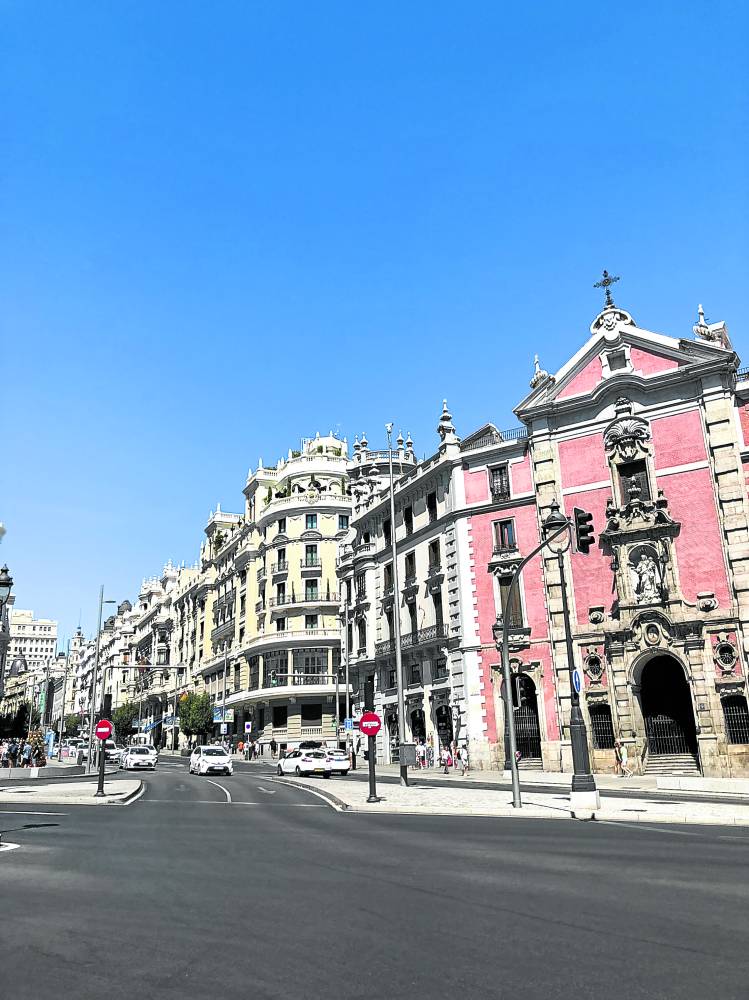
A wonderful way to experience the busy thoroughfare—apart from shopping from one boutique to the next—would be to go up to one of the numerous hotels’ rooftop terraces and enjoy sunset cocktails with amazing views of the city. Top picks include those of Ella Skybar, The Principal Madrid, Casa Suecia and the Círculo de Bellas Artes.
At the northern part of Madrid centro, take time discovering the countless cafés, restaurants and boutique shops of Malasaña and Chueca. The reputation of the former began in the ‘80s as a focal point during the Movida Madrileña, the cultural counterrevolution that figuratively exploded as a response to the end of the conservative and restrictive Franco dictatorship.
On the other hand, there is Chueca, the lively district committed to its promise of being a safe place for the LGBTQ+ community. You can find clubs to party at, exciting new, dining concepts but also charming shops ranging from international, hard-to-find cosmetics to ecological clothes.
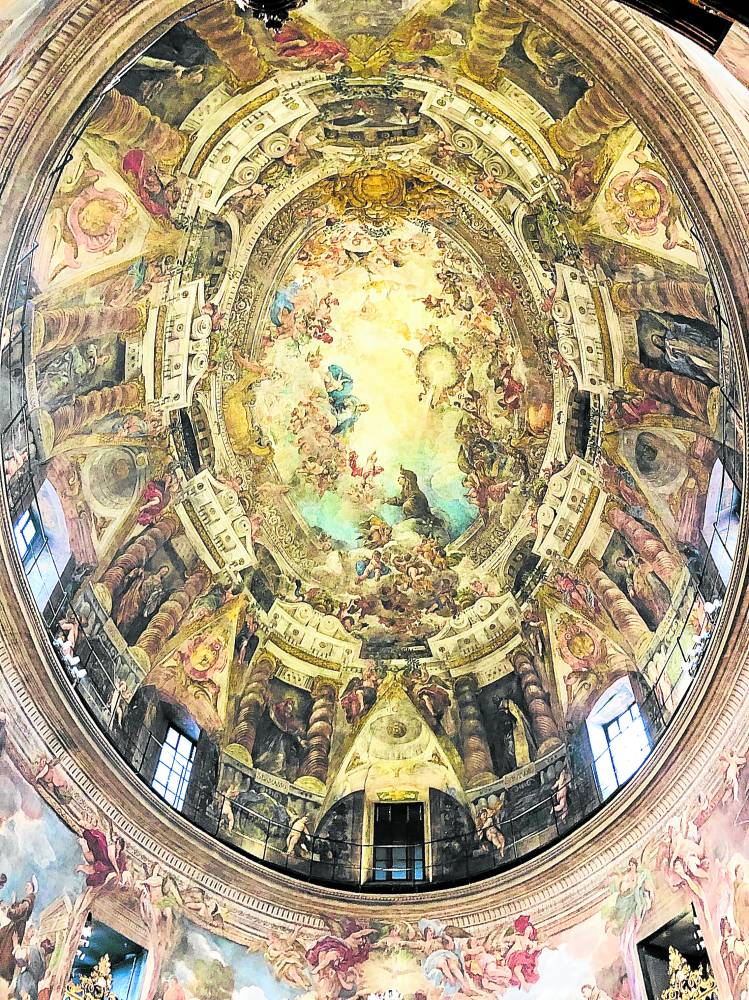
If you’re a history buff, there are sites that you should not miss. These include the church of San Antonio de los Alemanes, which for me is the most beautiful church in Madrid. There are also the Museum of the City of Madrid on Calle Fuencarral and the Museum of Romanticism, housed in the former palace of the Marques de Matallana. The said museum is a repository of artifacts and art from the Spanish Romantic period, and you can veritably breathe the epoch in each of its exquisitely decorated rooms.
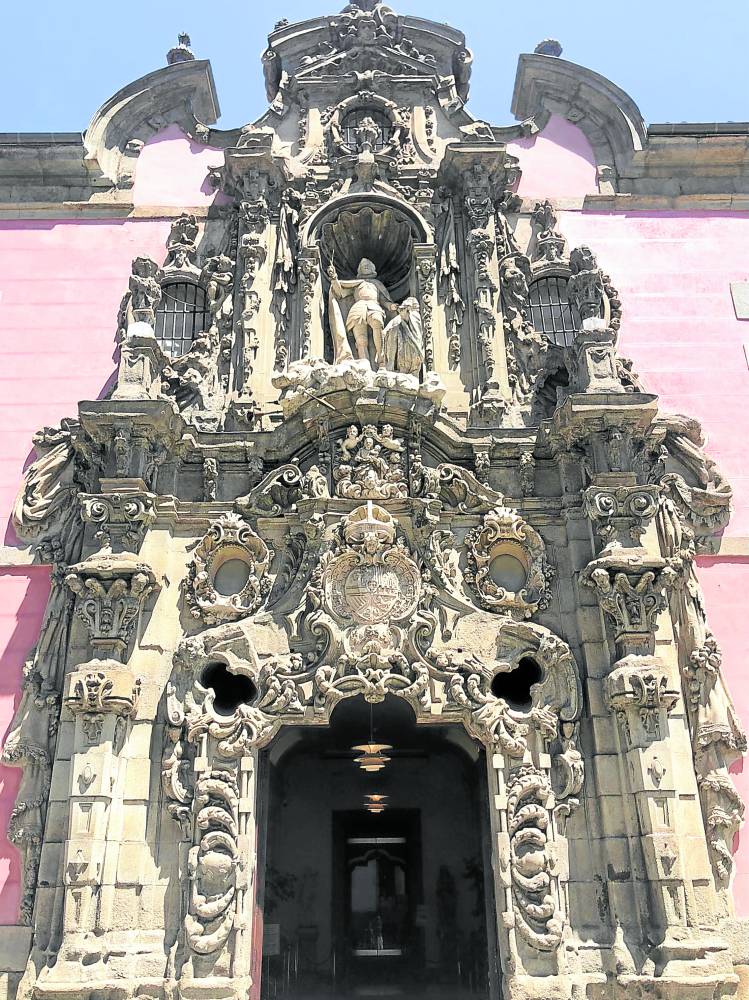
Recommended things to do in Malasaña and Chueca would be to start the day with freshly baked breads and pastries at Panod, wander around the area’s winding, hilly streets of and have lunch at Casa Macareno on Calle San Vicente. You can also visit the gorgeous churches of Sta. Barbara and that of the Monasterio de la Purísima Concepción. As the sun begins to set (well, that depends on which season you will visit), have the light but potent vermouth in Bodegas Ardosa, Casa Camacho or Taberna Angel Sierra and then, head to Roostiq in the posh side of Chueca for dinner.

And since you’re already on the cool side of town, it’s best to try the wide variety of gins at Macera then head to party in the bars and clubs of Chueca, Malasaña and Alonso Martínez.
Go south
To see though the area of central Madrid that beats its castizo (the term used to describe something quintessentially Madrileño), heart, you go southward from Puerta del Sol.
From the busy square, take Calle Mayor and turn toward the left to traverse Plaza Mayor. Here, you enter the heart of Baroque Madrid, the so-called “Madrid de los Austrias,” named after the Hapsburg dynasty that once ruled Spain. Madrid as a European capital is fairly young as compared to Paris or London. It was, however, during that same period of Hapsburg reign when Madrid experienced a boom in construction and a blossoming of its identity as the capital not only of peninsular Spain but of an Empire that reached America and Asia.
Plaza Mayor’s construction began in the late 16th century and through the years, it has been the focal venue of the city’s festivities, commercial activities, bull fights, beatifications, coronations and before you forget, public executions. Another practical tip is to avoid eating in the restaurants around the plaza except for a handful of Madrid’s signature bocadillo de calamares or squid sandwiches. The porticoed plaza can be accessed through several arches but for touristic purposes, the two entrances/exits that you should pass through would be those of Toledo and Cuchilleros, named after the guild of knife-makers that once surrounded the arch.

Surrounding this area of Plaza Mayor is a bevy of Catholic churches: basilicas, shrines, the city’s former cathedral as well as convents. Notable among these would be the Real Colegiata de San Isidro, the city’s cathedral until 1993 and shrine to Madrid’s patron, San Isidro Labrador; the massive Basilica de San Francisco el Grande featuring jaw-dropping frescoes and works by Goya and Zurbarán, among many other artists; the Basilica de San Miguel with its onion-shaped bell towers and unique convex façade, a Renaissance jewel; and numerous other Catholic places of worship. In fact, if you find yourself in Madrid during Semana Santa, this is the place to be as the venerable and royal brotherhoods or hermandades and the images under their custody process from these stately churches and into the winding streets of this zone.
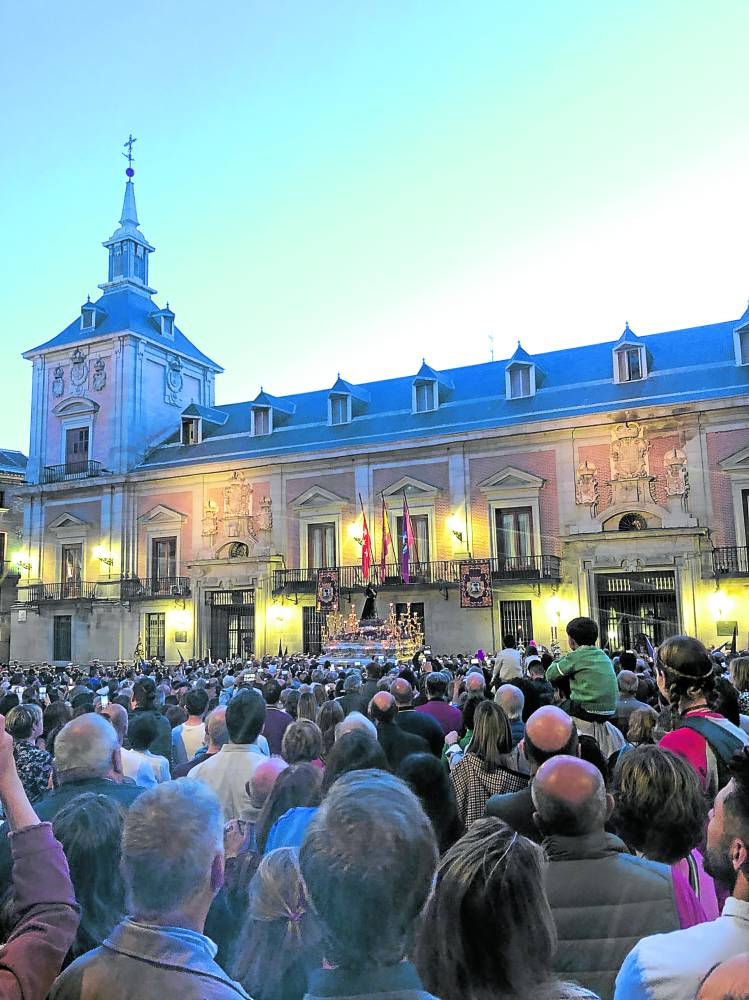
The people’s DNA
As mentioned above, it is in this southern part of Madrid centro where the castizo soul of the Spanish capital can be felt by the five senses. In the barrios of La Latina and Lavapies, for example, the summer verbenas in honor of San Cayetano, San Lorenzo and Nuestra Señora de La Paloma are celebrated with much gusto for approximately two weeks. Street parties with blaring music of different genres, day drinking among friends and families, chulapos and chulapas in their traditional garb dancing to chotis, mantones de Manila hung over streets—these fiestas are iconic to the city and form part of the DNA of its people.
On Sundays, the city flocks again to this side of town for El Rastro, the weekend flea market extravaganza that features all things vintage and quirky. From books and manuscripts to ‘90s clothing, plants and carpets—this is where all kinds of used goods are peddled to cater to all types of tastes. However, the Rastro experience isn’t complete without the culinary delights offered in this area.
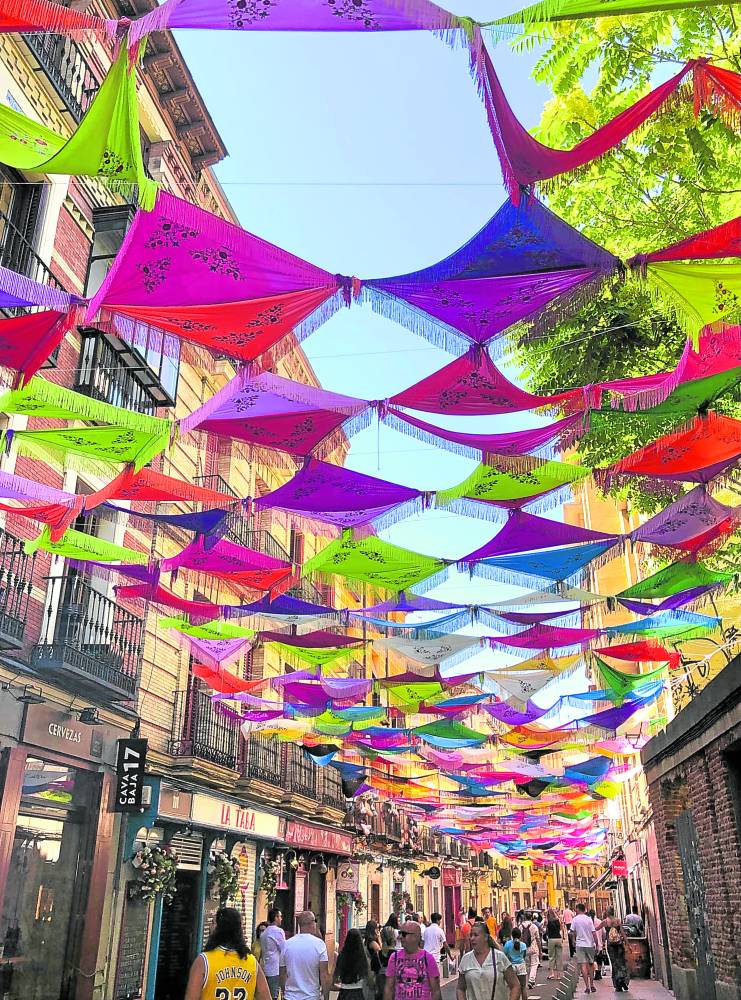
Here, you can either start or cap your flea market ventures with either hot chocolate and churros at famed Churrería Sta. Ana or with cold cañas of beer paired with an array of seafood from Bar Cruz (a must-try are navajas a la plancha or razor clams). Then, for lunch, you can try some of the city’s most emblematic dishes in several restaurants beloved by Madrileños: callos, huevos rotos, cocido or rabo de toro. Highly recommended are restaurants that do these dishes excellently, namely, Casa Lucio for their callos madrileños and huevos rotos and Malacatín for their multi-awarded cocido madrileño.
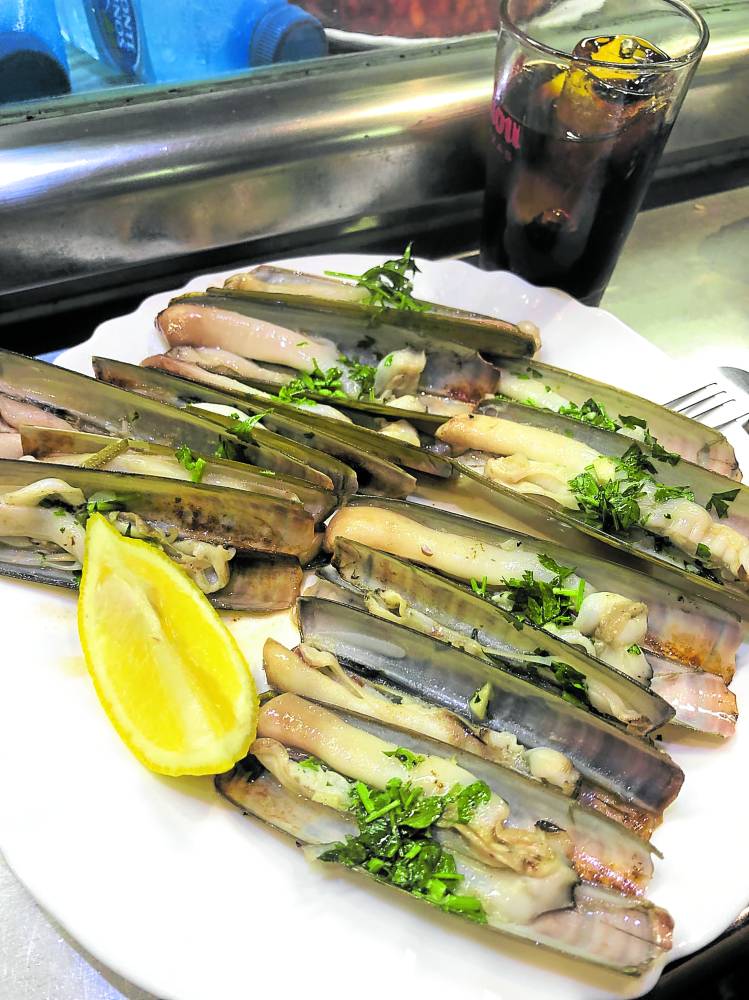
Your food trip can also take place in some of the less touristy markets of Anton Martín or San Fernando, where you will most likely spend hours on end drinking and ordering different dishes from the stalls, and of course, taking in the truly local vibe.
Madrid isn’t really a city of monuments wherein you’d have them on a list and tick one after the other. Its walkability is one of its main draws, and getting lost in its charming barrios bursting with life and history allows you to breathe, taste, see, hear, and touch a city full of soul and subtle elegance. —CONTRIBUTED








































